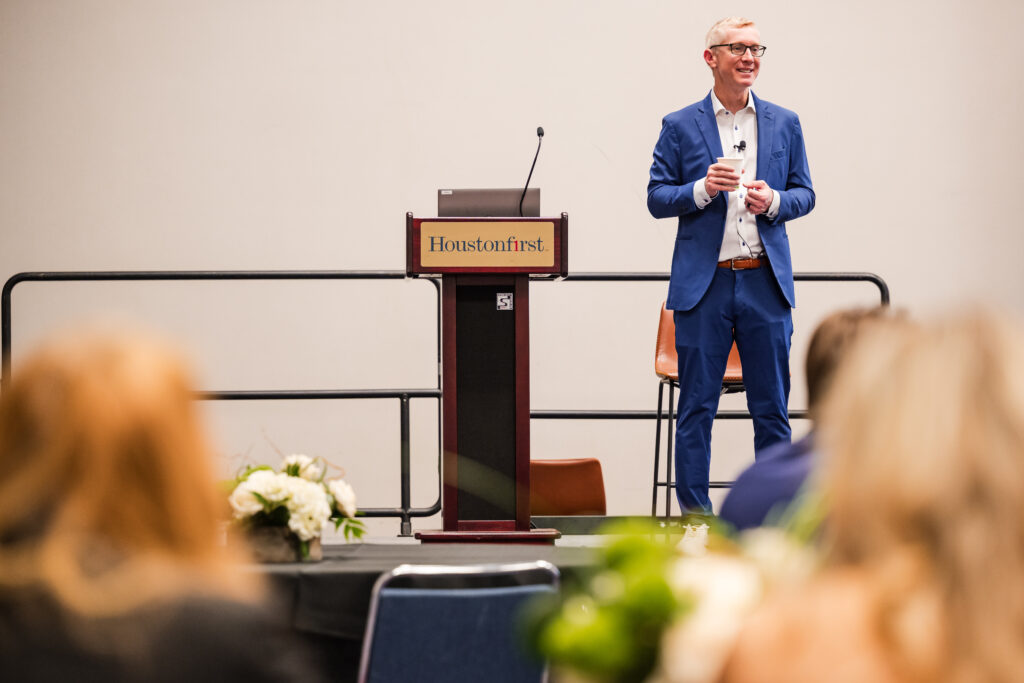Texas continues to earn its spot in the national spotlight—and not just for BBQ and bluebonnets. When it comes to multifamily housing, the Lone Star State is proving itself a powerhouse. From supply shifts to renewal rates and affordability trends, there’s no shortage of headlines shaping the future of rental housing across the state and beyond.
At the 2025 TAA ONE Conference, attendees got a front-row seat to those trends during the highly anticipated State of the Industry session led by renowned housing economist Jay Parsons. His data-packed update peeled back the layers of both national and regional dynamics, helping property professionals understand where we are—and what might come next.

Texas Leads in Growth, but Housing Starts Lag Behind
Parsons kicked off by highlighting a striking contrast: while Texas cities are home to some of the nation’s strongest rental demand and most affordable apartment options, housing starts have dropped to a 13-year low—mirroring national trends. He emphasized that although multifamily construction typically follows predictable patterns (with about a 24-month runway), current economic conditions are placing additional pressure on development timelines and investor confidence.
Even major markets like Austin, Dallas, Houston, and San Antonio are expected to see a dip in new supply over the next two years, with Fort Worth forecasted to remain flat. In fact, Parsons noted that housing starts are down more than 80% in several metros nationwide, including Austin, San Francisco, and Minneapolis, while other major cities like Denver, Charlotte, and Seattle are seeing drops in the 65–80% range.
Still, there are pockets of unexpected growth. One standout? Sherman–Denison, a market tucked near the Texas–Oklahoma border, is now leading the country in inventory growth with a staggering 20% increase. “That’s a sign of how localized opportunity can be—even in the face of national slowdown,” Parsons said.
Renewals Remain Resilient
Despite elevated supply levels in some regions, Parsons shared that lease renewal rates are holding steady and even climbing in some cases. With mortgage rates hovering around 6.75% and home prices still historically high, the spring homebuying season isn’t offering much relief. As a result, more residents are staying put, which is good news for operators focused on retention. “People aren’t out there buying homes right now,” he said. “And with fewer apartment seekers in the market, they’re narrowing their choices and expecting a top-tier experience.”
That expectation is prompting operators to sharpen their focus on the resident journey, particularly around renewals. Parsons said centralized approaches—where dedicated teams handle renewals rather than splitting responsibilities across leasing staff—are yielding strong results. In some markets, renewal rents are even exceeding new lease rates, a sign that operators are successfully capturing value from existing residents.
Dispelling Industry Myths
One of the more eye-opening parts of Parsons’ presentation came as he addressed a persistent industry myth: that the rental housing sector is dominated by a handful of massive players. “It’s not like Apple owning half the smartphone market,” he explained. “Even Greystar, the largest apartment operator, manages just 0.5% of the inventory in most markets.”
The single-family rental space is even more fragmented. The largest player, Progress Residential, holds just over half a percent of the nation’s SFR supply. Looking at Texas specifically, last year saw 423 market-rate apartment completions—developed by 230 different companies, managed by 128 different operators, and owned by 240 different entities. In short: this is a highly decentralized and competitive industry.
Affordability, Migration & Renters by Choice
Parsons also pushed back on claims that the Sun Belt is “overheated” or “burned out.” While migration patterns have cooled slightly from their pandemic-era peaks, he said the slowdown has been overstated. Affordability remains a huge advantage in Texas, especially when compared to coastal markets, and wage growth has outpaced rent growth for 28 consecutive months.
That affordability edge is drawing in a steady stream of new renters—many of them by choice. According to recent research by John Burns Real Estate Consulting, 800,000 young adults moved out on their own and entered the rental market this year. Q1 demand leaders included Dallas–Fort Worth (10,222 new leases), Atlanta, Phoenix, New York City, and Austin.
Still, not everything is rosy. Parsons reminded the audience that nearly half of all renter households are cost-burdened, meaning they spend more than 30% of their income on rent—with the impact varying significantly by race and income level.
The Bottom Line
While there are plenty of challenges ahead including cooling starts, tariff concerns, and shifting renter expectations, Parsons left attendees with a cautiously optimistic outlook. Texas markets remain resilient, operators are getting smarter about renewals, and residents are choosing to rent for flexibility and convenience.
“There’s always uncertainty,” Parsons said. “But there’s also opportunity—especially for those paying attention to what the data is really saying.”
